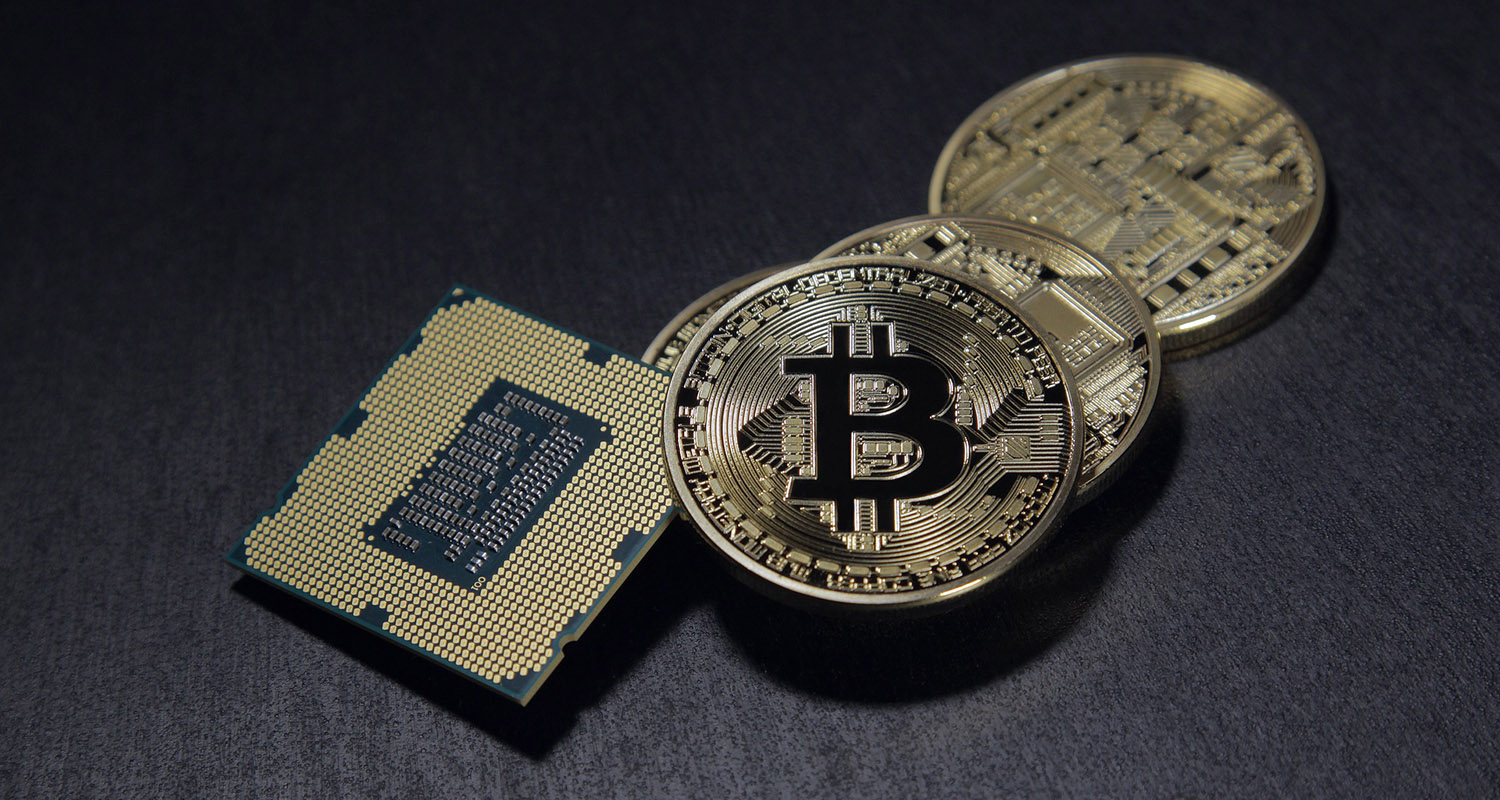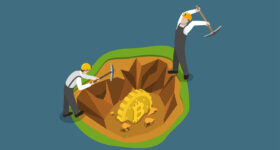
A blockchain,[1][2][3] originally block chain,[4][5] is a continuously growing list of records, called blocks, which are linked and secured using cryptography.[1][6] Each block typically contains a cryptographic hash of the previous block,[6] a timestamp and transaction data.[7] By design, a blockchain is inherently resistant to modification of the data. It is “an open, distributed ledger that can record transactions between two parties efficiently and in a verifiable and permanent way”.[8] For use as a distributed ledger, a blockchain is typically managed by a peer-to-peer network collectively adhering to a protocol for validating new blocks. Once recorded, the data in any given block cannot be altered retroactively without the alteration of all subsequent blocks, which requires collusion of the network majority.
Blockchains are secure by design and are an example of a distributed computing system with high Byzantine fault tolerance. Decentralized consensus has therefore been achieved with a blockchain.[9] This makes blockchains potentially suitable for the recording of events, medical records,[10][11] and other records management activities, such as identity management,[12][13][14] transaction processing, documenting provenance, food traceability[15] or voting.[16]
Blockchain was invented by Satoshi Nakamoto in 2008 for use in the cryptocurrency bitcoin, as its public transaction ledger.[1]
The first work on a cryptographically secured chain of blocks was described in 1991 by Stuart Haber and W. Scott Stornetta.[17] In 1992, Bayer, Haber and Stornetta incorporated Merkle trees to the design, which improved its efficiency by allowing several documents to be collected into one block.[6][18] In 2002, David Mazières and Dennis Shasha proposed a network file system with decentralized trust: writers to the file system trust one another but not the network in between; they achieve file system integrity by writing signed commits to a shared, append-only signature chain that captures the root of the file system (which in turn is a Merkle Tree).[19] This system can be viewed as a proto-blockchain in which all authorized clients can always write, whereas, in modern blockchains, a client who solves a cryptographic puzzle can write one block.[citation needed] In 2005, Nick Szabo proposed a blockchain-like system for decentralized property titles and his bit gold payment system that utilised chained proof-of-work and timestamping. However, Szabo’s method of double-spending protection was vulnerable to Sybil attacks.[20][not in citation given]
The first blockchain was conceptualised by a person (or group of people) known as Satoshi Nakamoto in 2008. It was implemented the following year by Nakamoto as a core component of the cryptocurrency bitcoin, where it serves as the public ledgerfor all transactions on the network.[1] Through the use of a blockchain, bitcoin became the first digital currency to solve the double spending problem without requiring a trusted authority and has been the inspiration for many additional applications.[4][1][3]
In August 2014, the bitcoin blockchain file size, containing records of all transactions that have occurred on the network, reached 20GB (gigabytes).[21] In January 2015, the size had grown to almost 30GB, and from January 2016 to January 2017, the bitcoin blockchain grew from 50GB to 100GB in size.[22] The words block and chain were used separately in Satoshi Nakamoto’s original paper, but were eventually popularized as a single word, blockchain, by 2016.
The term blockchain 2.0 refers to new applications of the distributed blockchain database, first emerging in 2014.[23] The Economist described one implementation of this second-generation programmable blockchain as coming with “a programming language that allows users to write more sophisticated smart contracts, thus creating invoices that pay themselves when a shipment arrives or share certificates which automatically send their owners dividends if profits reach a certain level”.[1] Blockchain 2.0 technologies go beyond transactions and enable “exchange of value without powerful intermediaries acting as arbiters of money and information”. They are expected to enable excluded people to enter the global economy, protect the privacy of participants, allow people to “monetize their own information”, and provide the capability to ensure creators are compensated for their intellectual property. Second-generation blockchain technology makes it possible to store an individual’s “persistent digital ID and persona” and are providing an avenue to help solve the problem of social inequality by “potentially changing the way wealth is distributed”.[24]:14–15 As of 2016, blockchain 2.0 implementations continue to require an off-chain oracle to access any “external data or events based on time or market conditions [that need] to interact with the blockchain”.[25]
In 2016, the central securities depository of the Russian Federation (NSD) announced a pilot project, based on the Nxt blockchain 2.0 platform, that would explore the use of blockchain-based automated voting systems.[26] IBM opened a blockchain innovation research center in Singapore in July 2016.[27] A working group for the World Economic Forum met in November 2016 to discuss the development of governance models related to blockchain.[28] According to Accenture, an application of the diffusion of innovations theory suggests that blockchains attained a 13.5% adoption rate within financial services in 2016, therefore reaching the early adopters phase.[29] Industry trade groups joined to create the Global Blockchain Forum in 2016, an initiative of the Chamber of Digital Commerce.[30]
Source: Wikipedia






 1 BTC =
1 BTC =
 104300.3900 USD
104300.3900 USD
 90944.2100 EUR
90944.2100 EUR
 1230.36000 LTC
1230.36000 LTC
 41.6800000 ETH
41.6800000 ETH
 77606.9700 GBP
77606.9700 GBP
 161204.1800 AUD
161204.1800 AUD
 142787.8200 CAD
142787.8200 CAD



Hi, this is a comment.
To get started with moderating, editing, and deleting comments, please visit the Comments screen in the dashboard.
Commenter avatars come from Gravatar.